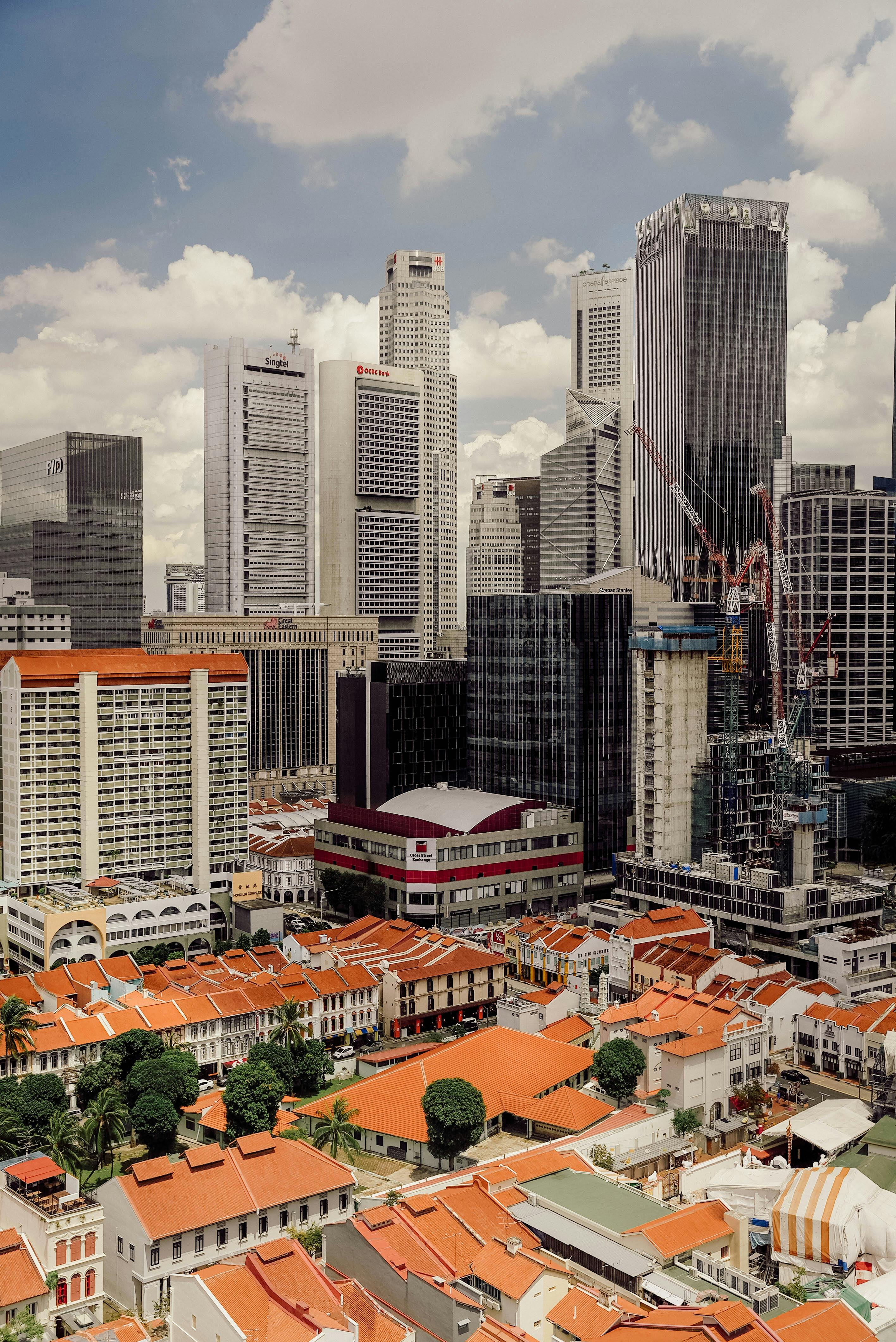Singapore Smart City Innovations: Transforming Urban Living and Sustainable Infrastructure
Singapore’s smart city model blends digital-first public services, resilient infrastructure, and pragmatic sustainability into something that feels both ambitious and strangely ordinary—ordinary in the sense that you can actually use it every day. The primary keyword here is simple and honest: Singapore smart city. And from my experience walking from a hawker centre to an MRT station while paying with my watch and pulling up government services on Singpass (yes, mid-commute), the promise matches reality more than most places I’ve worked in. Actually, let me clarify that: it’s the coherence—the way mobility, identity, payments, water, and energy interlock—that sets it apart12.
While many cities talk a good game about data and IoT, Singapore pairs policy with engineering and community adoption. I remember in 2019 thinking, “Sure, 5G will change everything,” but I wasn’t convinced until I saw how pilots moved quickly into scaled services here3. Now, as of right now, the country’s 2030 agenda links tangible sustainability targets to daily conveniences—NEWater topping up reservoirs; contactless transit becoming the norm; and Green Plan commitments showing up in construction sites, parks, and soon, in your electricity mix46. What really strikes me is how these systems encourage honest behavior by design: tap in, tap out, pay fair; retrieve permits online, move on quickly; use less water, because the pricing signals are clear.
Why Singapore’s Smart City Model Works
Honestly, I reckon three ingredients stand out: a clear national vision (Smart Nation), strong institutions with delivery authority (GovTech, IMDA, LTA, PUB), and a citizen-centric lens that turns big tech into small daily wins. The Smart Nation agenda is not just a press release; it’s a living roadmap with tied outcomes and funding1. On second thought, a fourth ingredient deserves mention: land use planning that integrates transport corridors, mixed-use neighborhoods, and nature buffers—look at the Urban Redevelopment Authority’s long-term master planning approach for proof7.
Key Insight
Integration beats novelty. Singapore excels by orchestrating identity, payments, mobility, and utilities through interoperable public platforms—then layering private innovation on top. That stack thinking (policy → platform → services) is, in my experience, the real unlock.
Ever notice how many “smart city” projects stall after flashy pilots? Singapore avoids that pitfall by aiming for whole-of-city coverage, not isolated districts. The result? Scale from day one. It’s not perfect—nothing is—but the move from prototypes to public adoption is consistently faster than I’ve seen elsewhere. A colleague recently pointed out that this pace is helped by steady demographics and density patterns that reward transit-first planning and compact urban form8. I used to think density was a constraint; now I see it as the canvas for seamless transit, short trips, and digital convenience.
“Smart cities aren’t about gadgets; they’re about systems that quietly work. The moment the tech disappears into everyday life, you know you’ve done it right.”
Smart Mobility: From Autonomous Trials to Everyday Payment
What I should have mentioned first: people feel smart mobility in their pockets. Contactless transit payments, real-time bus arrivals, and progressively safer road systems make commutes less of a daily gamble. LTA’s regulatory sandboxing for autonomous vehicle trials demonstrates cautious optimism—iterative testing in defined zones, with clear guardrails for safety and data5. Meanwhile, open standards and payments integration reduce friction at scale. In practical terms: quicker boarding, fewer queues, more predictable commutes—boring in the best possible way.
Under Singapore’s Green Plan 2030, the nation targets cleaner-energy vehicles and more EV charging points as it phases out internal combustion engine vehicles by 2040—a big systems shift that touches energy, transport, and urban design all at once613.
I’m not entirely convinced every city can move this fast—different political economies, different transit legacies—but the lesson travels well: standardize platforms, then invite innovation. It tends to work.
Digital Identity and Seamless Public Services
Having worked on identity projects elsewhere, I’ll be completely honest: most National ID schemes struggle with user experience. Singapore’s Singpass is a standout. It enables secure logins to government and private sector services, allowing payments, document signing, and approvals without clunky hardware tokens (though multi-factor options exist). The kicker is design maturity—simple flows, frequent updates, and relentless security hardening. Based on my years doing this, when identity works, the rest of the stack gets simpler: housing applications, healthcare access, tax filings, business licensing—everything speeds up2.
Takeaway for City Leaders
- Start with a citizen-first identity layer that respects privacy and consent.
- Build common services (payments, messaging, signatures) on top.
- Open APIs to private innovators—responsibly and gradually.
Water, Energy, and the Green Plan 2030
Here’s what gets me: sustainability can feel abstract until water runs low or the energy bill spikes. Singapore turned water scarcity into a national competency through diversified sources—imported water, local catchments, desalination, and NEWater (high-grade reclaimed water). This isn’t just neat technology; it’s life insurance for a city-state with limited natural resources. NEWater’s contribution helps secure supply and stabilize costs, while public education makes conservation concrete4. I used to think reclaimed water would be a tough sell culturally—turns out, transparency and quality assurance build trust.
The Green Plan 2030 knits together transport electrification, green finance, nature-based solutions, and resource circularity. What I should have said earlier: the plan’s strength lies in measurable goals, not slogans—more EV chargers, more green buildings, more parks linking neighborhoods, more solar deployment across rooftops and reservoirs6. Meanwhile, IMDA’s 5G push supports energy optimization and predictive maintenance in buildings and utilities3.
Featured Snippet: What is NEWater?
NEWater is Singapore’s brand of ultra-clean, high-grade recycled water produced using advanced membrane technologies and UV disinfection. It supplements reservoirs, strengthens water resilience, and reduces vulnerability to droughts4.
“Cities with diversified water portfolios withstand climate shocks better than those relying on a single source. Reuse is not optional in the 21st century.”
5G + IoT: The Invisible Backbone
Now, I know—network talk can put people to sleep. But this is the quiet enabler. Singapore’s 5G buildout provides the low-latency fabric for autonomous vehicles, port automation, digital twins, and real-time public safety solutions. Add IoT sensors for water pressure, energy load, and air quality, and you get proactive maintenance instead of costly emergencies. It sounds obvious, but the sequence matters: policy clarity, spectrum allocation, and enterprise use cases evolving in lockstep with coverage310.
| Enabler | City Use Case | Public Benefit | Reference |
|---|---|---|---|
| 5G Standalone | Port automation, AV trials | Higher throughput, lower latency | 39 |
| IoT Sensors | Water, energy, air quality | Early detection, predictive maintenance | 410 |
| Digital Identity | Secure e-services | Fewer queues, faster approvals | 2 |
| Green Plan | EVs, parks, green buildings | Lower emissions, better health | 6 |
Some of you are rolling your eyes right now—“We don’t have Singapore’s budget.” Fair. But I’ve consistently found that establishing a strong identity layer and picking two or three high-yield, sensor-fed use cases (water leaks, bus priority lanes, building energy) typically delivers a fast ROI, even in resource-constrained cities10. Also, start small, but start with interoperability in mind. Otherwise, you’ll pay the tech debt later. And it’s pricey.

Data Governance, Inclusion, and Trust
Let me step back for a moment. All this only works if people trust the system. Singapore’s approach—central platforms, clear authorities, and tight security—prioritizes reliability and consent. I go back and forth on one thing: the ideal balance between data-driven problem solving and privacy. The more I consider this, the more I believe that strong governance models, transparent audit trails, and publish-what-you-use data dashboards are essential. Cities that align data sharing with explicit purposes (transit optimization, health alerts) tend to see higher acceptance112.
“Without institutional trust, the smartest platform is just a nervous system that citizens refuse to use.”
Logistics and the Tuas Mega Port
Moving on—because ports matter. Tuas Mega Port is not just a headline; it’s a blueprint for automated, high-mobility logistics linked to global trade flows. Autonomous yard cranes, automated guided vehicles, and AI-optimized berthing schedules reduce turnaround times and carbon intensity. If you zoom out, the port is part of the same city stack: 5G connectivity, sensor fusion, predictive analytics, and a workforce trained for high-tech operations. The result? Reliability that clients can plan around, and emissions that operators can actually measure and cut93.
Why It Works (In Short)
- Systems thinking: port, city, and network treated as one organism.
- Standards first: interoperability before flashy pilots.
- Workforce upskilling: new jobs, new tools, continuous learning.
Heat, Nature, and the Cooling Singapore Project
Singapore is hot. That’s obvious. But urban heat isn’t just a comfort issue; it’s a productivity, health, and equity concern. The Cooling Singapore initiative models heat at neighborhood scale and evaluates interventions—shade trees, reflective materials, district cooling, and urban wind corridors. What puzzles me sometimes is how we still underprice shade despite its outsized benefits. Cooling Singapore’s work helps quantify those benefits and inject science into urban design choices11. Combine that with park connectors and City in Nature goals, and you get a city that cools itself, slowly but measurably6.
“Heat is a systems problem. Trees and materials are infrastructure—treat them like it.”
Green Buildings and Urban Design
Back when I first started advising on building retrofits, I underestimated how much layout—orientation, airflow, envelope—affects energy performance. Singapore’s building codes and Green Mark standards push developers toward higher-efficiency systems, passive design, and on-site renewable options. Pair that with URA’s planning guidance on mixed-use clusters and transit-oriented development, and the city edges closer to a walkable, breathable urban core7. I need to revise my earlier point: integration isn’t just digital; it’s spatial. Streets and sensors co-design how we live.
Design Principles I’ve Seen Work
- Transit first; parking last.
- Green where people actually walk and wait (not just rooftops).
- Passive cooling before mechanical fixes; then optimize systems.
- Data visibility for building managers and occupants.
Ever notice how quick wins cluster? Add shade, shorten walking distances, improve ventilation, and suddenly the energy bill drops while street life improves. The result? Incredible. And fairly repeatable, too, provided governance and incentives line up.
“Cities that invest in digital plus design—bits and bricks—gain resilience dividends.”
Looking ahead, I expect stronger links between green finance and the built environment. Singapore’s financial ecosystem is already nudging capital toward sustainability through disclosure frameworks and transition financing tools14. This is where I get passionate: when capital costs reward efficient design, smart cities stop being a “nice-to-have” and become the default.
Measuring Outcomes: KPIs That Matter
Okay, let’s step back. What do we measure to know this is working? I’ve learned to watch four families of indicators: service reliability (uptime, response time), accessibility (coverage, affordability), sustainability (emissions, water reuse, green space), and satisfaction (user adoption, complaint resolution). By and large, Singapore reports progress publicly across these domains—transport punctuality, e-service adoption rates, water security metrics, and cross-city quality-of-life indicators, including Smart City Index placements15. Not perfect, but increasingly transparent—and that transparency builds trust.
Quick KPI Checklist
- Transit: On-time performance, average wait time, contactless adoption.
- Digital: Monthly active users of ID, service completion time.
- Sustainability: Water reuse share, EV charger density, urban canopy cover.
- Economy: Logistics turnaround, startup creation, green finance flows.
What’s Next: 2030 and Beyond
Meanwhile, Singapore continues linking sustainability to competitiveness. The phase-out of internal combustion engine vehicles alters streets and buildings (think chargers in car parks) and changes grid planning. At the same time, population dynamics and land constraints require ever-tighter integration between planning, mobility, and nature networks138. My current thinking is that digital twins at district scale—combined with heat modeling—will guide capital allocation more precisely than spreadsheets ever could11. And then… everything changed when AI made predictive city ops mainstream. We’re getting there—carefully.
City Playbook: How to Adapt Singapore’s Lessons
For city leaders, here’s a pragmatic way forward. It’s not copy-paste; it’s adapt-and-integrate:
- Define a cross-agency mission. Name owners, budgets, and outcomes (quarterly).
- Build the identity and payments core. Then open APIs deliberately2.
- Pick 3 sensor-driven use cases. Water leaks, bus priority signals, building energy410.
- Publish KPIs and iterate. Transparency builds momentum1215.
- Align finance with outcomes. Tie incentives to green and reliable performance14.
Final Thought
Singapore’s playbook is neither magic nor mysterious—it’s disciplined integration. If you remember one thing, make it this: get the civic stack right (identity, payments, data), and the urban stack (mobility, water, buildings) becomes easier to optimize.
Conclusion
Honestly, I used to think “smart city” meant fancy dashboards. In Singapore, it means catching your bus on time, finding shade on a hot day, signing documents securely on your phone, and trusting your taps during a heatwave. The systems are visible only when they fail—which, increasingly, they don’t. If your city is wrestling with congestion, water risk, or fragmented digital services, consider the Singapore approach: coordinated institutions, interoperable platforms, and public reporting. Not glamorous—just effective. And that’s the point.
References



